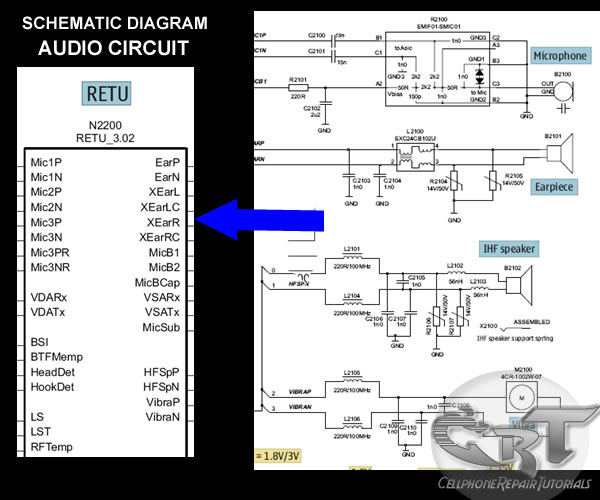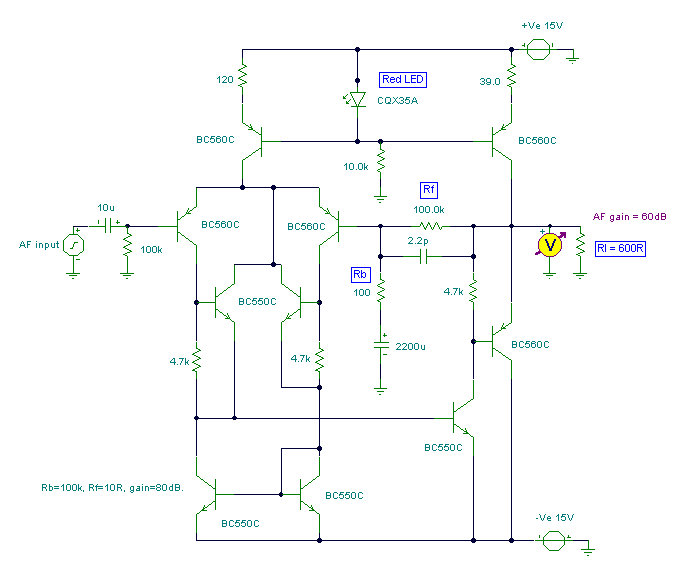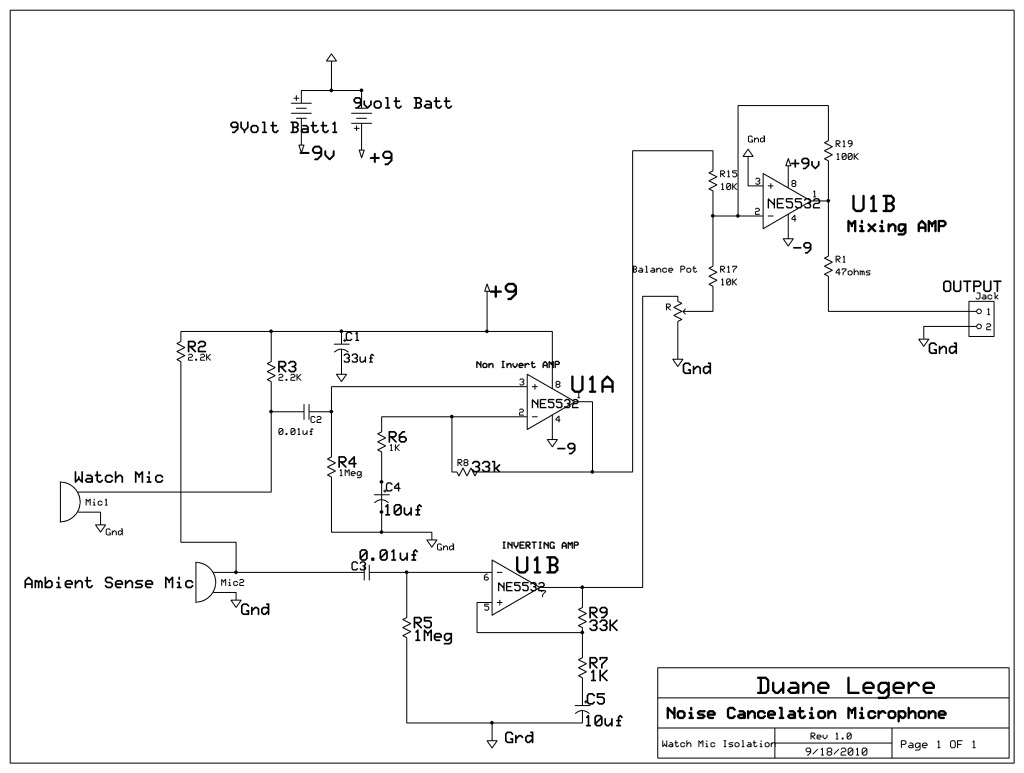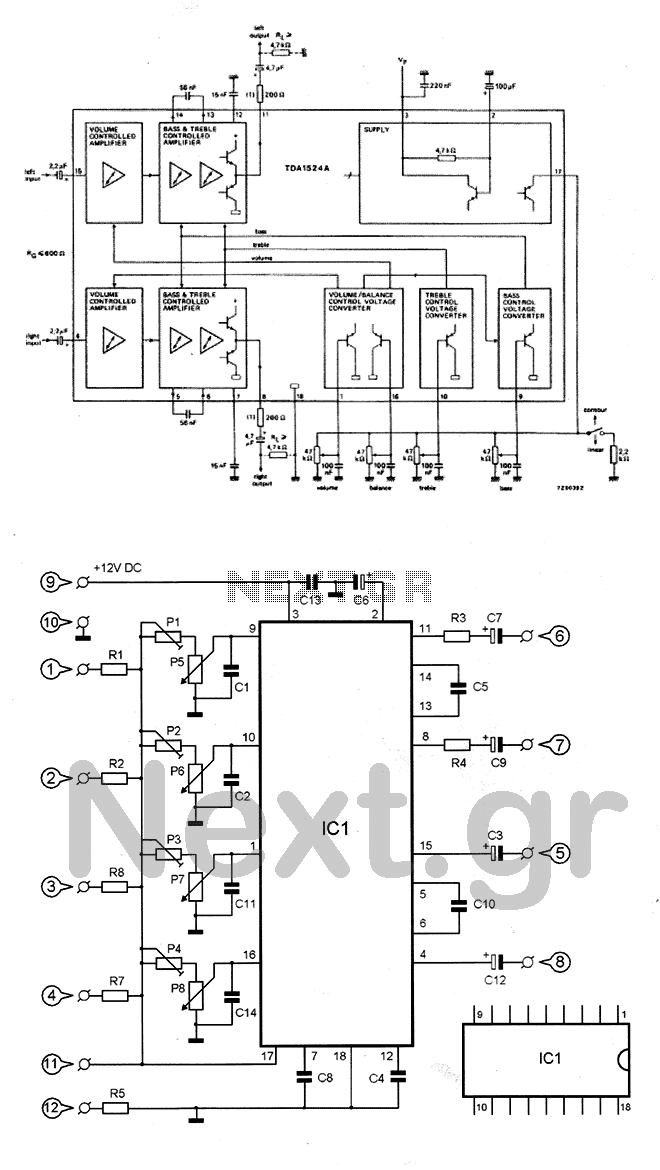
lm387 dynamic microphone preamplifier
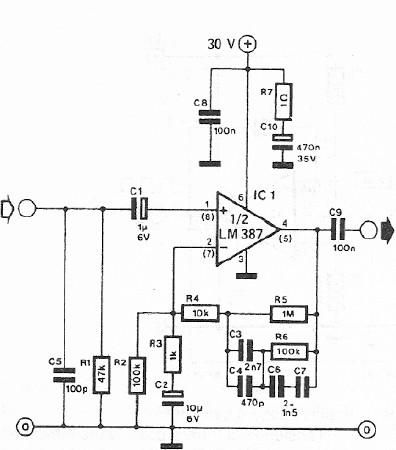
A dynamic microphone preamplifier can be constructed using the LM387 dual operational amplifier integrated circuit. The input impedance is approximately 47k ohms, primarily determined by resistor R1. If a dynamic microphone with a different impedance is to be connected, resistor R1 can be adjusted accordingly. The amplification level of the dynamic microphone preamplifier is set to 40 dB. Additionally, the input impedance of the amplifier to which the preamplifier will be connected should be at least 100k ohms.
The LM387 is a versatile dual operational amplifier that can be effectively employed in audio applications, particularly in preamplifying signals from dynamic microphones. The circuit configuration typically includes a non-inverting amplifier setup, where the dynamic microphone is connected to the non-inverting input of one of the LM387's op-amps. The choice of resistor R1 is critical as it establishes the input impedance; thus, selecting a resistor value of 47k ohms ensures optimal compatibility with most dynamic microphones.
The amplification factor is set to 40 dB, which is achieved through feedback and gain resistors in the circuit. The gain can be calculated using the formula: Gain (dB) = 20 * log10(Vout/Vin). In this configuration, the feedback resistor and the ground resistor values need to be selected to achieve the desired gain while maintaining stability and low distortion.
It is also important to consider the output impedance of the preamplifier. The connected amplifier must have an input impedance of at least 100k ohms to ensure proper signal transfer and minimize loading effects. This high input impedance helps maintain the integrity of the audio signal, preventing any significant loss of amplitude or quality.
In summary, the LM387-based dynamic microphone preamplifier is an effective solution for enhancing microphone signals, providing a high input impedance, adjustable gain, and compatibility with various dynamic microphones. Proper selection of resistors and understanding of the circuit parameters will ensure optimal performance in audio applications.A dynamic microphone preamplifier can be realized using LM387 dual operational amplifier integrated circuit. Input impedance corresponds to 47k, it depends almost exclusively by R1. If you wish to connect a dynamic microphone with a different value, the resistance R1 can be changed.
Dynamic microphone preamplifier amplification was set at 40dB. In put impedance of the amplifier where it will connect the preamplifier must be at least 100k. 🔗 External reference
The LM387 is a versatile dual operational amplifier that can be effectively employed in audio applications, particularly in preamplifying signals from dynamic microphones. The circuit configuration typically includes a non-inverting amplifier setup, where the dynamic microphone is connected to the non-inverting input of one of the LM387's op-amps. The choice of resistor R1 is critical as it establishes the input impedance; thus, selecting a resistor value of 47k ohms ensures optimal compatibility with most dynamic microphones.
The amplification factor is set to 40 dB, which is achieved through feedback and gain resistors in the circuit. The gain can be calculated using the formula: Gain (dB) = 20 * log10(Vout/Vin). In this configuration, the feedback resistor and the ground resistor values need to be selected to achieve the desired gain while maintaining stability and low distortion.
It is also important to consider the output impedance of the preamplifier. The connected amplifier must have an input impedance of at least 100k ohms to ensure proper signal transfer and minimize loading effects. This high input impedance helps maintain the integrity of the audio signal, preventing any significant loss of amplitude or quality.
In summary, the LM387-based dynamic microphone preamplifier is an effective solution for enhancing microphone signals, providing a high input impedance, adjustable gain, and compatibility with various dynamic microphones. Proper selection of resistors and understanding of the circuit parameters will ensure optimal performance in audio applications.A dynamic microphone preamplifier can be realized using LM387 dual operational amplifier integrated circuit. Input impedance corresponds to 47k, it depends almost exclusively by R1. If you wish to connect a dynamic microphone with a different value, the resistance R1 can be changed.
Dynamic microphone preamplifier amplification was set at 40dB. In put impedance of the amplifier where it will connect the preamplifier must be at least 100k. 🔗 External reference
